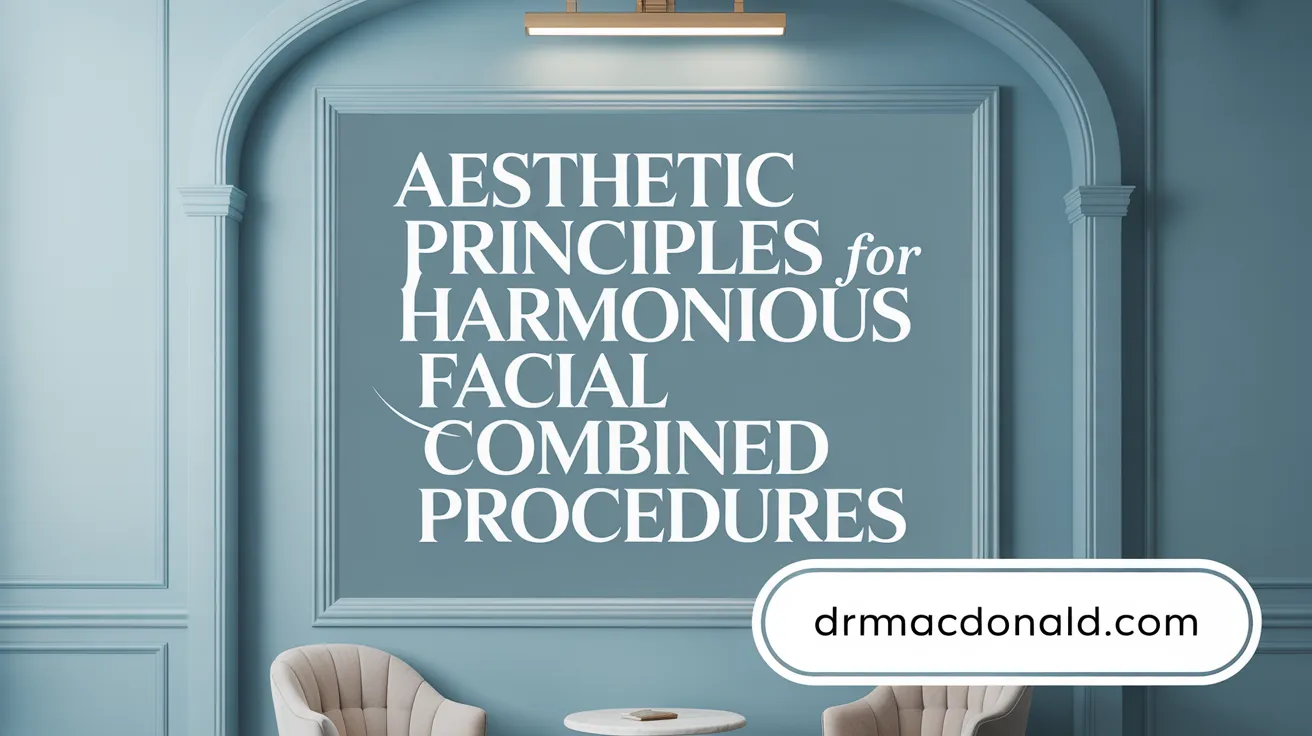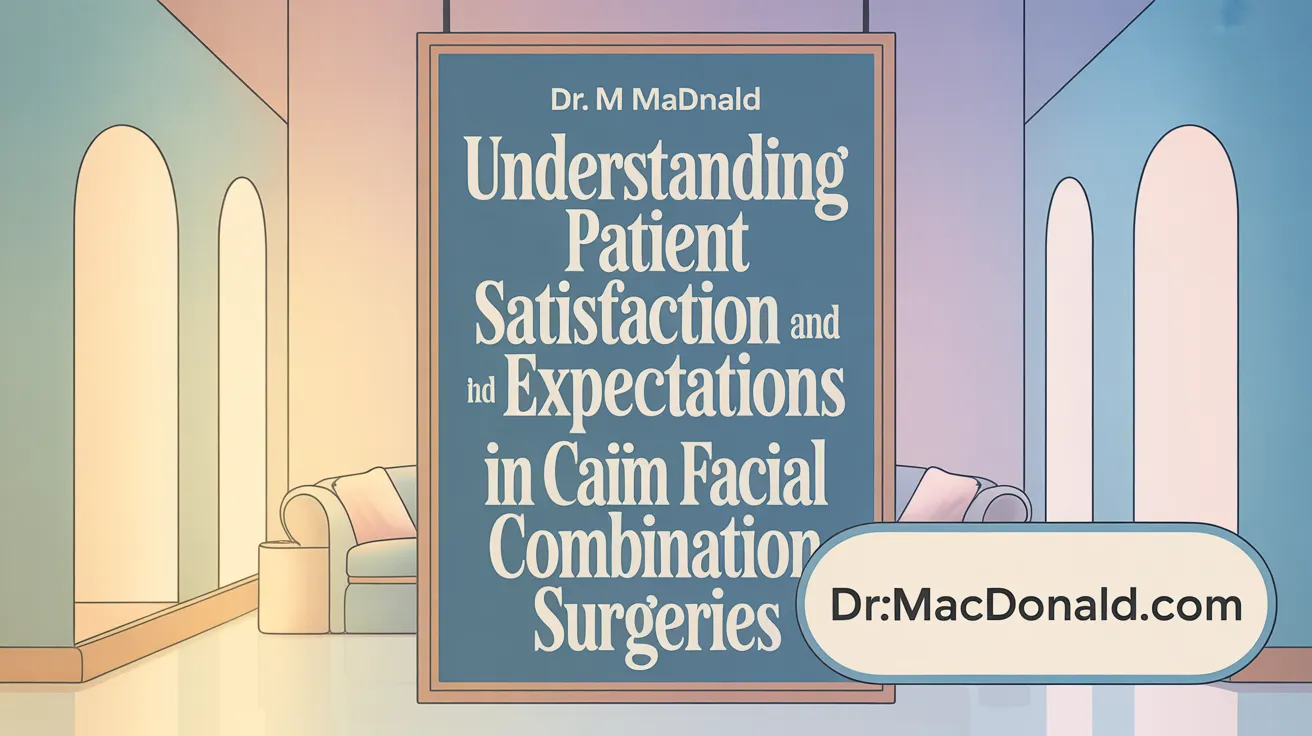Understanding Combined Rhinoplasty and Facial Enhancements
Combining rhinoplasty with chin or cheek augmentations has become increasingly common in facial cosmetic surgery, reflecting a growing demand for comprehensive facial harmony and proportion. These combined procedures offer patients a streamlined approach to improving facial balance, reducing overall recovery time, and achieving more natural, aesthetically pleasing results. This article explores the prevalence, planning, benefits, patient demographics, trends, and long-term outcomes associated with these combination facial surgeries, providing a detailed look at their rising popularity and clinical effectiveness.
Prevalence and Motivations Behind Combining Rhinoplasty With Chin or Cheek Enhancements
 Combining rhinoplasty with other facial augmentations, such as chin or cheek enhancements, is a common practice in aesthetic surgery. It allows patients to address multiple facial features in a single surgical session, aiming for a harmonious and balanced appearance. Specifically, rhinoplasty combined with chin augmentation is often performed because these features are closely interconnected in determining facial harmony. Many individuals seeking nose reshaping also have a small or recessed chin that makes their nose seem larger or disproportionate, prompting surgeons to recommend combined procedures.
Combining rhinoplasty with other facial augmentations, such as chin or cheek enhancements, is a common practice in aesthetic surgery. It allows patients to address multiple facial features in a single surgical session, aiming for a harmonious and balanced appearance. Specifically, rhinoplasty combined with chin augmentation is often performed because these features are closely interconnected in determining facial harmony. Many individuals seeking nose reshaping also have a small or recessed chin that makes their nose seem larger or disproportionate, prompting surgeons to recommend combined procedures.
Patients usually choose to combine rhinoplasty with chin or cheek work to optimize facial proportions and achieve a natural, balanced profile. This integrated approach not only improves aesthetic outcomes but also reduces overall recovery time, anesthesia risks, and costs. Conducting multiple procedures simultaneously means patients undergo only one healing process, making it a practical solution, especially for busy individuals. Experienced surgeons evaluate each patient's facial anatomy to determine the best combination of procedures — whether it involves implants, fat grafts, or bone repositioning — contributing to a cohesive and aesthetically pleasing result. These tailored combination procedures enhance facial harmony and minimize downtime.
Overall, combining rhinoplasty with chin or cheek enhancements is driven by the desire for facial harmony, higher satisfaction with the outcome, and the convenience of a single recovery period. This approach has become increasingly popular as patients and surgeons recognize the benefits of comprehensive facial reshaping in one surgical session.
Principles and Best Practices in Planning Combined Rhinoplasty and Facial Enhancements

How do principles of facial aesthetics and harmony inform the decision to perform combined procedures like rhinoplasty with chin or cheek augmentation?
Principles of facial aesthetics and harmony are fundamental to planning combined procedures by emphasizing balanced facial proportions and cohesive relationships among features. These principles advocate for addressing multiple areas, such as the nose and chin, simultaneously to enhance overall symmetry and achieve natural results. Surgeons consider aesthetic concepts like the Golden Ratio to guide proportionate enhancements.
During planning, detailed facial analysis ensures interventions complement each other without creating unnatural transitions. Respecting facial aesthetic units (AUs) and zones (ZAs) helps maintain natural contours and avoid overcorrecting any feature. By tailoring procedures to individual anatomy and aesthetic ideals, surgeons can restore or elevate facial harmony, this enhances patient satisfaction and produces more harmonious, youthful appearances. Using a comprehensive approach rooted in aesthetic principles and facial harmony, ensures interventions work synergistically, balancing the face and creating aesthetically pleasing results.
What are the typical guidelines and best practices for planning and timing combined facial cosmetic procedures such as rhinoplasty with chin or cheek enhancements?
Effective planning for combined facial procedures begins with thorough preoperative consultation and facial evaluation. This includes analyzing facial proportions, symmetry, and aesthetic goals to develop a customized treatment plan aligned with patient expectations.
Procedures can be performed simultaneously or staged, depending on complexity and patient health. Common practice often involves starting with the rhinoplasty or chin augmentation to establish a foundational shape, followed by complementary procedures. Combining surgeries reduces overall recovery time, anesthesia exposure, and costs, but requires careful sequencing by experienced surgeons to ensure safe anesthesia duration.
Advanced imaging technologies, like 3D simulation, are instrumental in visualizing expected outcomes, helping patients and surgeons set realistic expectations. Ensuring safety involves adhering to anesthesia guidelines, such as limiting total surgical time (generally under six hours), and monitoring for complications.
Overall, the decision to combine procedures depends on individual anatomy, surgical risk, and aesthetic goals. With meticulous planning, experienced surgical teams can optimize results, ensuring natural harmony, safety, and patient satisfaction in combined facial cosmetic surgeries.
Benefits, Safety, and Long-Term Outcomes of Combined Rhinoplasty and Chin or Cheek Surgeries

What are the benefits and safety considerations associated with performing rhinoplasty concurrently with chin and cheek surgeries?
Performing rhinoplasty alongside chin and cheek surgeries offers notable advantages. Patients benefit from improved facial harmony and proportionality, often achieving a more natural and balanced look after a single surgical session. This approach also reduces overall recovery time and costs, as multiple concerns are addressed simultaneously, minimizing the need for separate procedures, contributing to reducing overall surgery time and cost savings in surgery.
Safety is a vital aspect of combined surgeries. Careful preoperative assessment, including detailed facial analysis and imaging is essential to formulate a precise surgical plan. Surgeons aim to limit total anesthesia time—not exceeding six hours—to reduce risks such as infection, excessive bleeding, or anesthesia-related complications. Adherence to safety guidelines, coupled with experienced surgical teams, ensures optimal outcomes.
Additionally, advanced techniques and meticulous planning help manage risks related to healing sites and recovery. Patient education on post-operative care and support systems further contribute to successful results. When performed by qualified surgeons, combined facial procedures are both safe and effective, delivering high satisfaction while maintaining safety standards.
Patient Demographics, Satisfaction, and Psychological Impact of Combined Procedures

What patient demographics and satisfaction rates are associated with combined rhinoplasty and facial enhancements?
Patients opting for combined rhinoplasty with facial enhancements typically fall into a young, predominantly female demographic, with the average age around 28.5 years. Most are unmarried and have a high level of interest in achieving natural, harmonious facial proportions. The satisfaction rates among these patients are generally high, with Likert scale measurements averaging between 3.8 and 4.1 out of 5, reflecting a strong sense of contentment with postoperative outcomes (Rhinoplasty patient satisfaction).
Regional and socioeconomic factors also influence patient satisfaction. Higher-income individuals, for example, tend to report greater satisfaction, potentially due to better access to experienced surgeons and advanced imaging technology that helps in preoperative planning. Women and patients from particular geographical regions often demonstrate more positive satisfaction scores compared to other groups (Global Survey 2023 full report).
Patients with specific nasal features such as dorsal humps or over-projected tips often report higher satisfaction after rhinoplasty, especially when combined with chin augmentation or other facial procedures (Combining rhinoplasty with other facial procedures). Age plays a role too; younger patients (under 40) tend to have more realistic expectations and adapt better to postoperative changes (Why Does Rhinoplasty Go Hand in Hand With Chin Augmentation).
Psychological factors, including prior depression or body image concerns, significantly impact satisfaction. Patients undergoing these combined procedures often experience improvements in body image and self-confidence, which further enhances their overall satisfaction (Impact of Patients' Personality Traits on Rhinoplasty Outcomes). The use of advanced imaging during consultation helps align patient expectations with realistic outcomes, thereby boosting post-surgical contentment (Advanced imaging for rhinoplasty outcomes).
Most patients, following proper preoperative evaluation and surgeon guidance, feel satisfied enough to recommend these procedures to others. Overall, demographic variables such as gender, income, and regional background, combined with psychological well-being and precise surgical planning, play crucial roles in achieving favorable patient satisfaction in combined rhinoplasty and facial enhancements (Consulting certified plastic surgeons).
Current Trends, Innovations, and Future Directions in Combined Facial Cosmetic Surgery
In recent years, facial cosmetic surgery has seen a significant shift towards less invasive, more precise techniques that emphasize natural-looking results. Surgeons now commonly incorporate emerging minimally invasive methods, such as endoscopic procedures and advanced cartilage grafting, to enhance facial harmony without extensive dissection or visible scars.
A major technological advancement aiding this trend is the widespread use of 3D imaging and simulation software. These tools enable patients and surgeons to visualize potential outcomes before surgery, facilitating better planning and setting realistic expectations. Virtual simulations help in customizing procedures like rhinoplasty and chin augmentation, ensuring that modifications align with the patient's facial proportions and aesthetic goals.
Hybrid approaches combining surgical and non-surgical treatments are increasingly popular. For example, after performing rhinoplasty and genioplasty, surgeons might use dermal fillers or fat transfer to fine-tune jawline contours and cheek prominence, achieving layered, natural results. These combined modalities reduce the need for multiple surgeries, shorten recovery times, and deliver comprehensive facial rejuvenation.
Among the most favored combinations are rhinoplasty with chin or cheek augmentations. These procedures aim to improve the profile and overall facial balance by addressing disproportionate features—such as a receding chin or flat midface—during a single operative session. Such combinations not only optimize aesthetic harmony but also increase patient satisfaction.
Furthermore, the influence of social media, influencer culture, and technological advancements in imaging has transformed patient expectations and decision-making processes. Prospective patients are now more informed and seek personalized, subtle enhancements that improve their natural beauty. This cultural shift encourages surgeons to adopt refined techniques that support aesthetic goals while minimizing visible signs of intervention.
Looking ahead, the integration of AI-driven analytics and machine learning is poised to revolutionize treatment planning, outcome prediction, and patient communication. Continuous innovation in surgical instruments, biomaterials, and imaging will support even more precise, safe, and effective combined procedures. As the field evolves, the focus remains on delivering harmonious, natural results that enhance facial identity, making combined minimally invasive and hybrid therapies the cornerstone of future facial aesthetic surgery.
Summary and Outlook on Combined Rhinoplasty and Facial Enhancement Procedures
Combining rhinoplasty with chin or cheek enhancements is a prevalent and growing strategy in facial cosmetic surgery designed to optimize facial harmony, balance, and patient satisfaction. Motivated by the desire for cohesive aesthetic improvements and efficient recovery, patients and surgeons increasingly favor this approach due to its benefits in cost, downtime, and outcome quality. Success depends on meticulous planning rooted in principles of facial aesthetics and personalized consultation enhanced by advanced imaging technologies. Safety remains paramount, with well-established guidelines ensuring minimal risks and stable long-term results. Diverse patient profiles reflect the procedure's broad appeal and demonstrated satisfaction. Emerging trends blend surgical precision with non-invasive techniques, positioning combined procedures at the forefront of facial rejuvenation and enhancement. As technology and techniques evolve, combined facial procedures will likely continue to advance, offering even more natural, lasting, and comprehensive aesthetic solutions for patients seeking balanced facial beauty.
